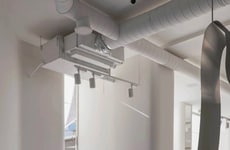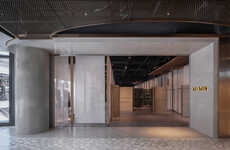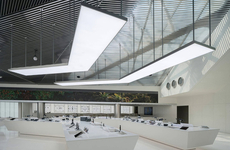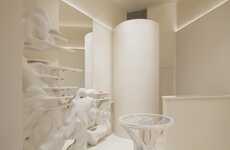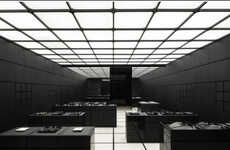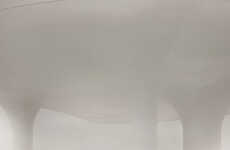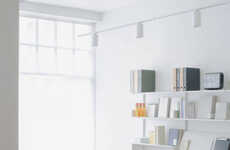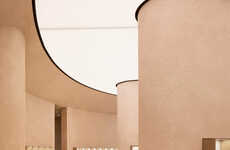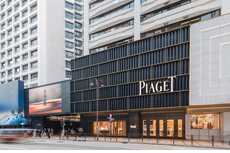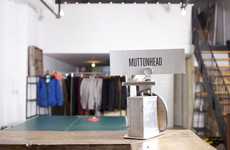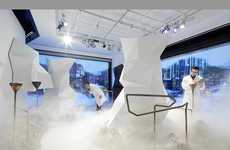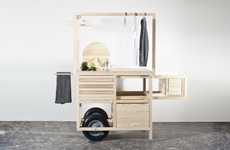
The Design Collective Shop Features Geometric Elements
Jana Pijak — August 7, 2012 — Art & Design
References: en.neriandhu & frameweb
The Design Collective Shop by Neri and Hu features a boldly geometric design concept. The retail space features an angular staircase that encompasses the entire interior, serving as its main focal point.
Faced with the task to redesign an aged building, design studio Neri and Hu infused the shops existing space with unexpected structural elements that provide the space with stability while giving it a memorable source of visual interest.
A geometric wood-clad staircase runs through all three storeys of the Design Collective Shop. From its exhibition spaces to its showroom areas, this modern interior strays from the banal, daring to push the boundaries of human perception. With its optically deceiving focal point and and eye-catching design elements, this retail space marries fashion with architecture.
Faced with the task to redesign an aged building, design studio Neri and Hu infused the shops existing space with unexpected structural elements that provide the space with stability while giving it a memorable source of visual interest.
A geometric wood-clad staircase runs through all three storeys of the Design Collective Shop. From its exhibition spaces to its showroom areas, this modern interior strays from the banal, daring to push the boundaries of human perception. With its optically deceiving focal point and and eye-catching design elements, this retail space marries fashion with architecture.
Trend Themes
1. Geometric Design - Disruptive innovation opportunities exist in creating products and spaces that incorporate bold geometric design concepts.
2. Memorable Visual Interest - Opportunities for disruptive innovation lie in designing retail spaces and products that feature memorable focal points and visual elements.
3. Fashion Architecture Integration - Disruptive innovation can be explored by integrating the fields of fashion and architecture to create visually unique retail spaces and products.
Industry Implications
1. Interior Design - The interior design industry can leverage disruptive innovation opportunities by incorporating bold geometric design concepts into their projects.
2. Retail - In the retail industry, disruptive innovation can be achieved by designing retail spaces with memorable focal points that engage customers and enhance the shopping experience.
3. Fashion - The fashion industry can explore disruptive innovation by collaborating with architects to create fashion-forward retail spaces that integrate elements of architecture.
3.5
Score
Popularity
Activity
Freshness

